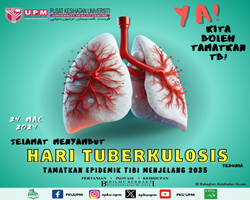Learn 4 main ways how chemicals at workplace can enter the body
How can chemicals enter my body?
In order for a chemical to harm a person's health, it must first come into contact or enter the body, and it must have some biological effect on the body. There are four major routes by which a chemical may enter the body:
- Inhalation (breathing)
- Skin or eye contact
- Swallowing (ingestion or eating)
- Injection
Breathing of contaminated air is the most common way that workplace chemicals enter the body. Some chemicals, when contacted, can pass through the skin into the blood stream. The eyes may also be a route of entry. Usually, however, only very small quantities of chemicals in the workplace enter the body through the eyes. Workplace chemicals may be swallowed accidentally if food, hands, or cigarettes are contaminated. For this reason, workers should not drink, eat, or smoke in areas where they may be exposed to chemicals.
Injection is the fourth way chemicals may enter the body. While uncommon in most workplaces, it can occur when a sharp object (e.g., needle) punctures the skin and injects a chemical directly into the bloodstream.
Regardless of the way the chemical gets into the body, once it is in the body it is distributed in the body by the blood stream. In this way, the chemical may harm organs which are far away from the original point of entry as well as where they entered the body.
What happens to contaminated air when I breathe it in?
Contaminated air in the workplace can be inhaled. Air is drawn through the mouth and nose, and then into the lungs. An average person will breathe in and out about 12 times a minute. Each of the 12 breaths brings in about 500 mL of air, corresponding to 6 litres of air per minute, together with any contaminants that the air contains.
People involved in hard physical work will breathe harder and take in more than 6 litres a minute. Over an 8-hour working day, more than 2,800 litres of air will be breathed in and out of the lungs. In conditions of hard physical work, up to 10,000 litres may be exchanged. Air breathed in through the nose is filtered by the nasal hairs so that large, solid particles in the atmosphere are prevented from going any further. Inside the nose there are small bones and cartilages that cause the inhaled air to swirl around. This swirling air can cause some large contaminating particles to be deposited in the nose and trapped by the moisture of the mucus lining.
Air coming in from the nose and the mouth reaches the back of the throat and enters an area known as the pharynx. The pharynx, which is the entrance to the airways, divides into two tubes, one called the esophagus, which carries food to the stomach, and one called the trachea, which leads down towards the lungs. Contaminated air passes into the trachea which itself divides into two large tubes, each called a bronchus. Each bronchus enters a lung. Once inside its lung, each bronchus starts to branch. The tubes of the bronchus get thinner and thinner as they spread, rather like the branches of a tree. Eventually, the tiniest tubes, which are called bronchioles, end in thin-walled air sacs. Each of these sacs is called an alveolus. Collectively, they are called alveoli and there are many thousands of these alveoli in each lung. The walls of the alveoli are very thin and are richly supplied with tiny blood vessels (capillaries).
Oxygen and chemical vapours, gases, and mists in the inhaled breath crosses the alveolar walls to enter the blood, then distributed throughout the body.
Solid particles which cannot pass through the thin wall of the air sacs may lodge and stay where they are. Some may dissolve, and others may be attacked and destroyed by the scavenger cells of the body's defence system. This may cause scars, which eventually interfere with the lung's ability to pass oxygen into the blood stream.
Some acids, bases, or organic chemicals, when inhaled in sizable amounts, can cause serious and irreparable "burn" damage to the mouth, nose, trachea, bronchi and lungs.

How are chemicals inhaled?
Gases and Vapours
Workplace chemicals can enter the air in a number of different ways. Simple evaporation is probably the most common way. Organic solvents, such as toluene, methyl ethyl ketone (MEK), or alcohols, generally evaporate more rapidly than water, acids, or bases, although this is not always the case. Evaporation produces vapours. Vapours are formed from products that exist as solids or liquids under normal temperature and pressure conditions. Products that do not exist as solids or liquids at normal temperatures and pressures are called gases. Gases as well as vapours can contaminate the workplace air.
Mists
In some instances, an industrial process might produce tiny liquid droplets that are able to float in the air. These droplets are called mists. Mists are formed by gases that condense into small liquid droplets in the air. Alternatively, mists may form by breaking up, splashing, or atomizing a liquid. Examples include acid mists from electroplating, oil mists from cutting and grinding, or paint spray mists from painting operations.
Dusts, fumes and smoke
Other workplace processes can generate tiny solid particles which are light enough to float in the air, and these particles are referred to as dusts, fumes and smoke. Dusts are solid particles often generated by some mechanical activity. They are usually heavy enough to settle slowly to the ground. Fumes are very tiny solid particles which can remain airborne, and are formed when a heated metal has evaporated in the air and then condensed back to a solid form. Fumes can occur in welding operations. Smoke is carbon or soot from burning. Smoke particles can settle or remain airborne depending on their size.
How can a chemical enter my body through the skin?
Chemicals which pass through the skin are nearly always in liquid form. Solid chemicals and gases or vapours do not generally pass through the skin unless they are first dissolved in moisture on the skin's surface.
The skin is the second most common route by which occupational chemicals enter the body. The skin consists essentially of two layers, a thin, outermost layer called the epidermis and a much thicker underlayer called the dermis. The epidermis consists of several layers of flat, rather tightly-packed cells which form a barrier against infections, water, and some chemicals. This barrier is the external part of the epidermis. It is called the keratin layer, and is largely responsible for resisting water entry into the body. It can also resist weak acids but is much less effective against organic and some inorganic chemicals. The keratin layer contains fat and fat- like substances which readily absorb chemicals which are solvents for fat, oil, and grease.
Organic and alkaline chemicals can soften the keratin cells in the skin and pass through this layer to the dermis, where they are able to enter the blood stream. Areas of the body such as the forearms, which may be particularly hairy, are most easily penetrated by chemicals since they can enter down the small duct containing the hair shaft. Chemicals can also enter through cuts, punctures or scrapes of the skin since these are breaks in the protective layer. Contact with some chemicals such as detergents or organic solvents can cause skin dryness and cracking.All these conditions weaken the protective layer of the skin and may allow chemicals to enter the body.
Chemicals can vary enormously in the degree to which they penetrate the skin. Some solvents may soften the keratin layer but are not believed to penetrate much further unless there is prolonged skin contact. Other chemicals can readily pass through the epidermis and subsequently enter the blood stream. Some chemicals are so corrosive they burn holes in the skin, allowing entry for infection or other chemicals.
In some instances, chemicals may enter the body by accidental injection through the skin. This situation may occur in hospital settings or in industrial hole-punching or injection processes. Once in the blood stream, these chemicals can be transported to any site or organ of the body where they may exert their effects.
How can chemicals enter my body through my eye(s)?
The eyes are richly supplied with blood vessels and many chemicals can penetrate the outer tissues and pass into the veins. The eye may or may not be damaged during this process, depending on the corrosive nature of the chemical and its ability to penetrate the outer tissues.
How are chemicals swallowed (ingested)?
Chemicals can enter the stomach either by swallowing contaminated mucus which has been expelled from the lungs, or by eating and drinking contaminated food. Food and drink are most frequently contaminated by contact with unwashed hands, gloves or clothing, or by being left exposed in the workplace. Nail-biting and smoking can also contribute to exposure.
Once inside the mouth, chemicals pass down the esophagus and then into the stomach. Some chemicals, such as alcohols, may pass across the stomach wall and enter the blood stream here, but most chemicals move from the stomach into a long, twisting tube known as the small intestine. The inside of the small intestine has many hundreds of tiny finger-like projections called villi. The villi have very thin walls and are filled with tiny blood vessels. This formation allows some ingested chemicals to pass from the small intestine across the walls of the villi and enter the veins. The chemical is then carried around the body by the blood stream.
Some chemicals, which are not soluble or whose basic units (molecules) are too big to pass across the villi walls, will stay in the gut and pass out of the body in the feces without being absorbed into the blood stream to any extent.
Some acids, bases and organics may cause severe "burn" damage to the digestive system if swallowed in high concentrations.
Date of Input: 12/07/2023 | Updated: 12/07/2023 | izzatussofia
MEDIA SHARING





























